 |
 |
 |
| |
50% PREVALENCE OF PHYSICAL FUNCTION IMPAIRMENT AND FRAILTY IN MIDDLE-AGED PWH - age 46-55
|
| |
| |
CROI 2020
Reported by Jules Levin
"Older age, Black race, 10 years on ART, history of thymidine analog (TA), greater BMI, high waist circumference, hypertension and physical inactivity were associated with physical function impairment in univariate analyses (figure). Black race, greater BMI and physical inactivity remained associated with physical function impairment in the multivariate model.
Physical function impairment and pre-frailty were common among middle-aged PWH; greater BMI and physical inactivity are important modifiable factors that may prevent further decline in physical function with aging."
program abstract
People with HIV (PWH) are at risk for accelerated development of physical function impairment and frailty with increasing age; both of which are associated with increased risk of falls, hospitalizations and mortality. We evaluated the prevalence of physical function impairment and frailty, and their association with demographics, clinical characteristics and risk factors among middle-aged PWH with low to moderate cardiovascular risk.
At enrollment, REPRIEVE (A5332) participants were 40-75 years of age, on stable antiretroviral therapy (ART) with CD4+ count >100 cells/mm3, cardiovascular risk score ≤15%, excluding diabetes if LDL cholesterol ≥70 mg/dL; those concurrently enrolled into the physical function substudy A5361S (PREPARE) between 2017-2018 at US sites were evaluated at baseline. The evaluations included Short Physical Perfomance Battery (SPPB; 10x repeated chair stand, balance, 4-m walk), frailty phenotype, Duke Activity Status Index (DASI) and Rapid Eating and Activity Assessment for Patients (REAP). Physical function impairment was defined as a composite SPPB score ≤10. Associations between covariates and physical function impairment were evaluated using logistic regression.
Among the 266 participants, the median age was 51 (Q1, Q3: 46, 55) years; 81% were male; 47% white, 45% Black; 18% Hispanic. The median CD4+ count was 610 (437, 840) cells/mm3; 93% had HIV-1 RNA <50 copies/mL; 28% hypertension; 38% were overweight (BMI 25 to <30 kg/m2), 30% obese (BMI 30 kg/m2); 33% had high waist circumference (>102 cm in men, >88 cm in women); 89% were physically inactive (REAP). 37% (95% CI: 31%, 43%) had physical function impairment; 6% (4%, 9%) were frail and 42% pre-frail;
31% reported not being able to perform one or more instrumental activities of daily living (DASI).
Older age, Black race, 10 years on ART, history of thymidine analog (TA), greater BMI, high waist circumference, hypertension and physical inactivity were associated with physical function impairment in univariate analyses (figure). Black race, greater BMI and physical inactivity remained associated with physical function impairment in the multivariate model.
Physical function impairment and pre-frailty were common among middle-aged PWH; greater BMI and physical inactivity are important modifiable factors that may prevent further decline in physical function with aging.
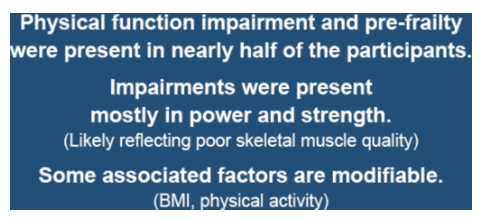
Poster pdf attached
Triin Umbleja1, Todd T Brown2, Heather J Ribaudo1, Jennifer A Schrack3, Constance A Benson4, BenignoRodriguez5, Roberto C Arduino6, Sarah Henn7, Kathleen V Fitch8, Pamela S. Douglas9, Steven K Grinspoon8, Edgar T Overton10, Kristine M Erlandson11for the PREPARE Team
1Center for Biostatistics in AIDS Research, Harvard T. H. Chan School of Public Health, Boston, MA, USA; 2Johns Hopkins University School of Medicine, Baltimore, MD, USA; 3Johns Hopkins Bloomberg School of Public Health, Baltimore, MD, USA; 4University of California, San Diego, CA, USA;
5Case Western Reserve University, Cleveland, OH, USA; 6McGovern Medical School at UTHealth, Houston, TX, USA; 7Whitman Walker Health, Washington, DC, USA; 8Metabolism Unit, Massachusetts General Hospital and Harvard Medical School, Boston, MA, USA;
9Duke Clinical Research Institute, Duke University Medical Center, Durham, NC, USA; 10University of Alabama at Birmingham School of Medicine, Birmingham, AL, USA; 11University of Colorado Anschutz Medical Campus, Aurora, CO, USA.
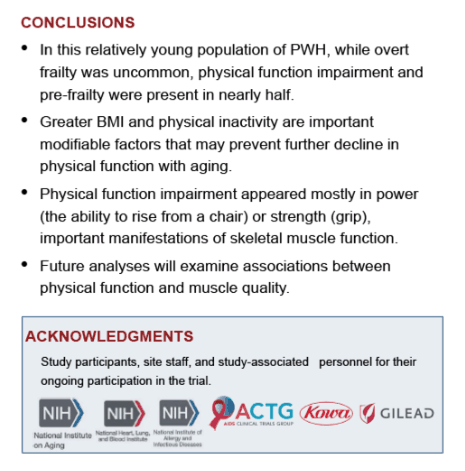
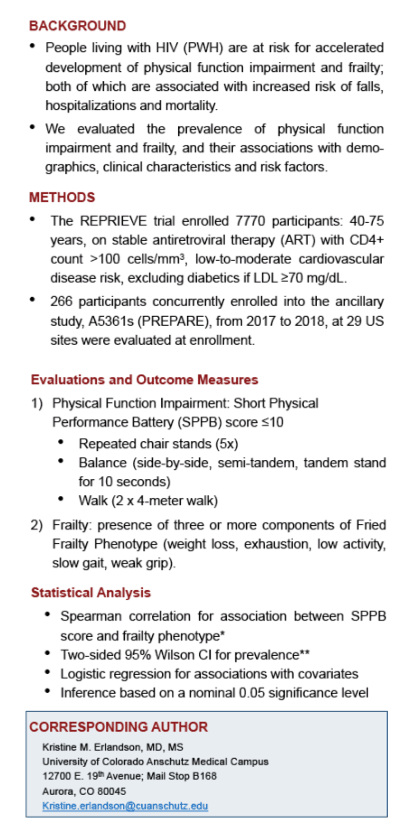
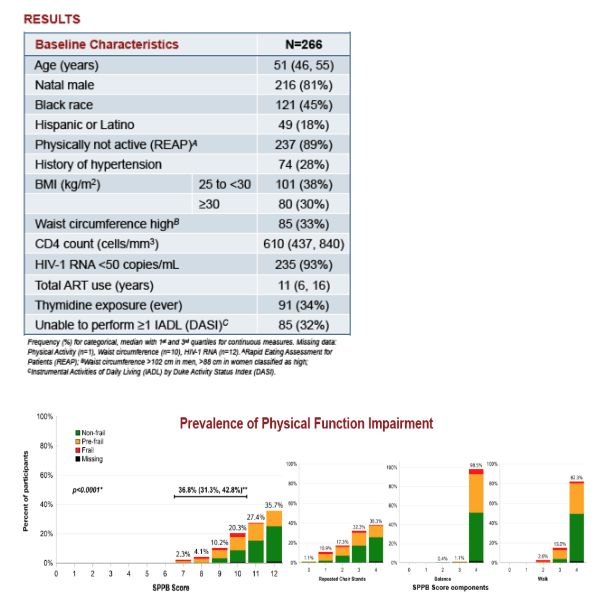
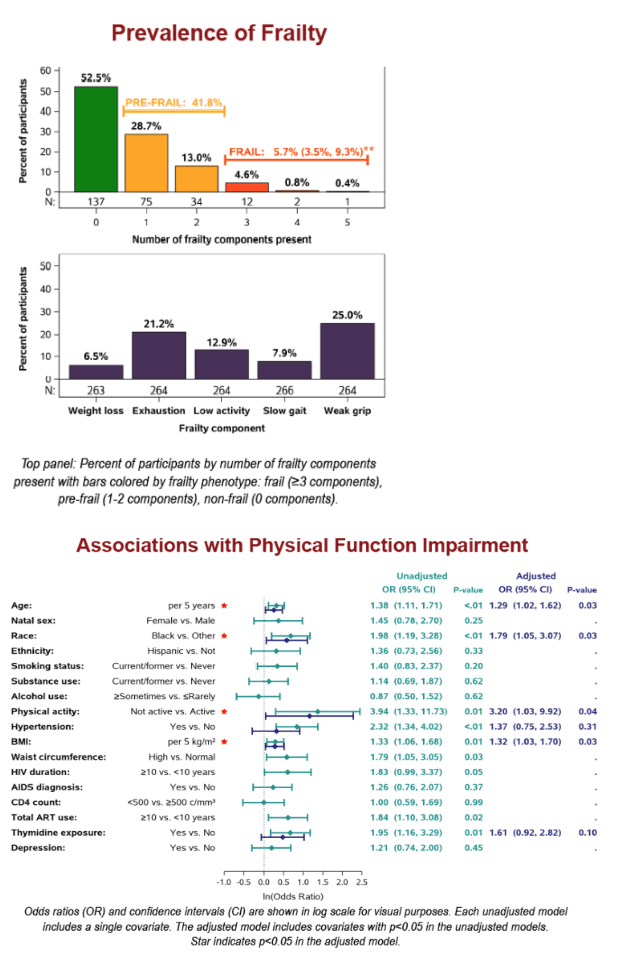
|
| |
|
 |
 |
|
|